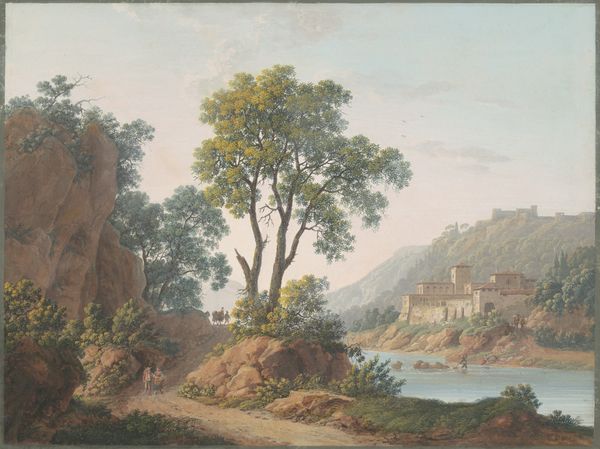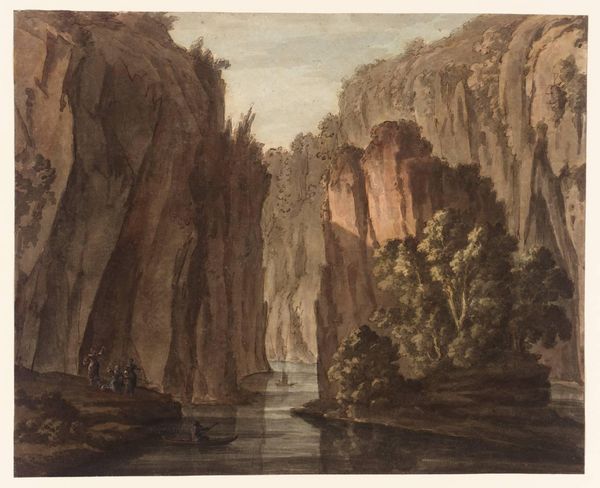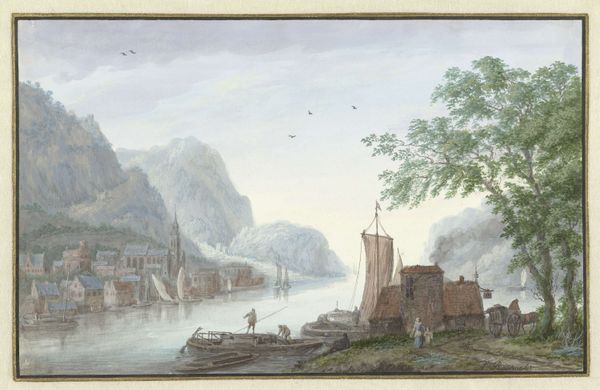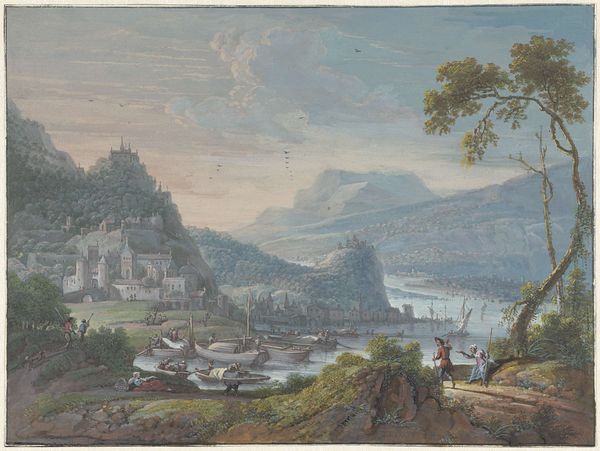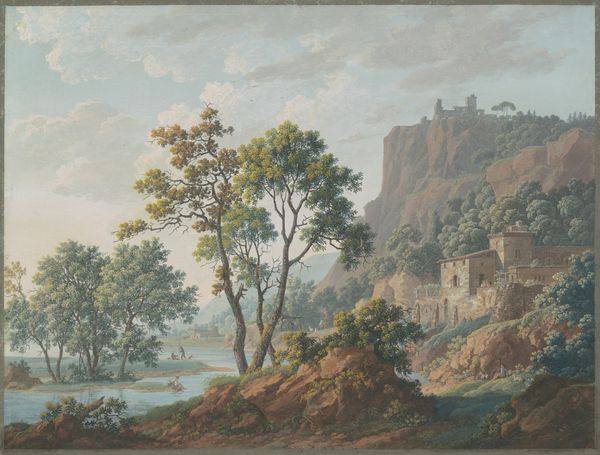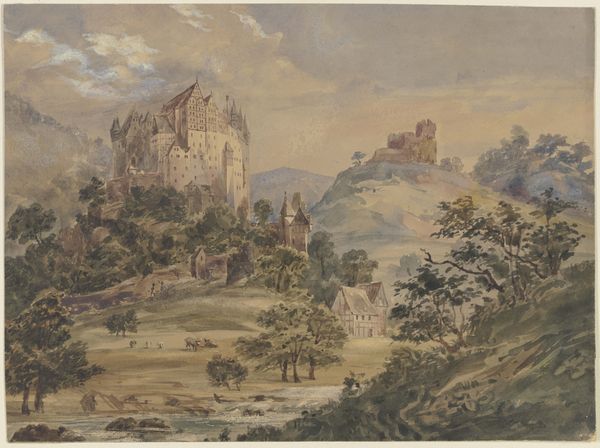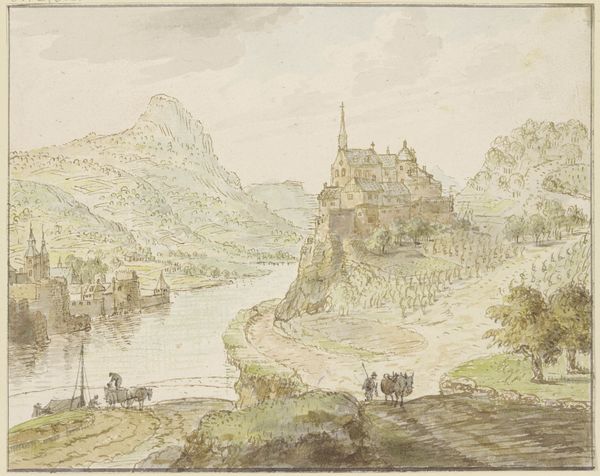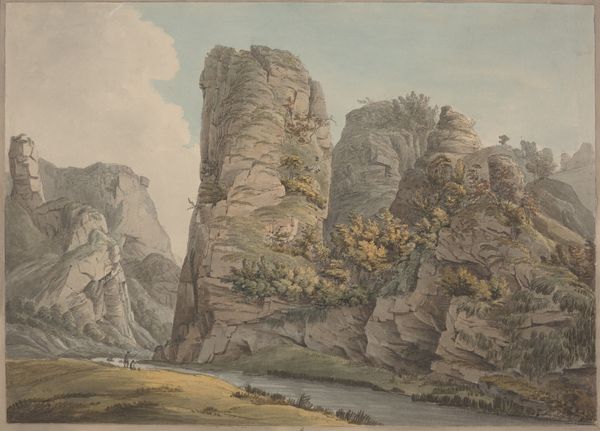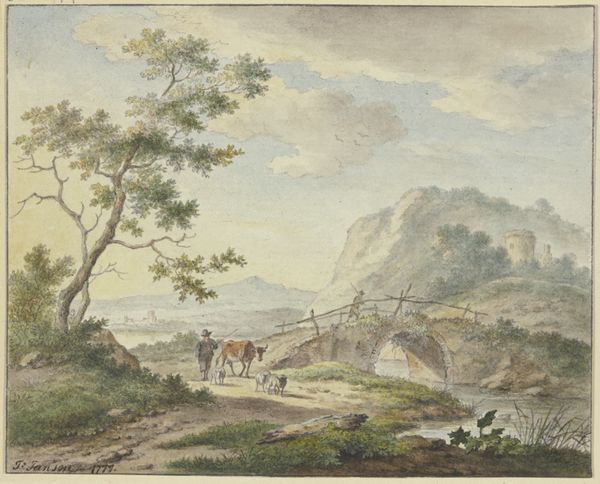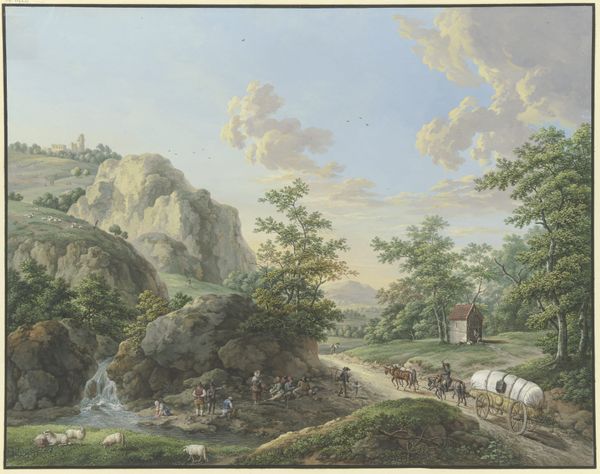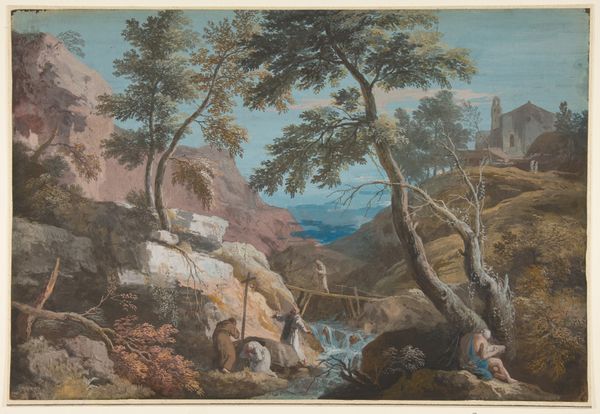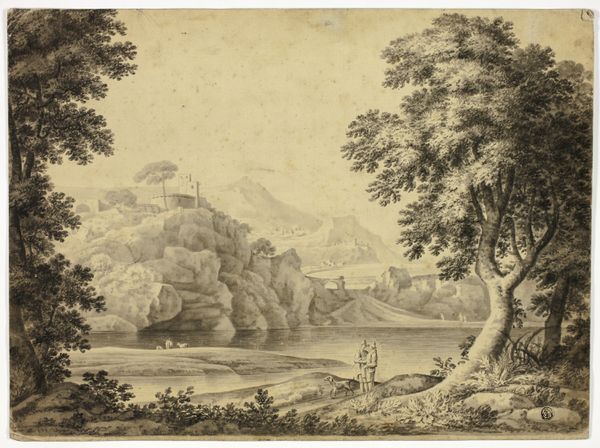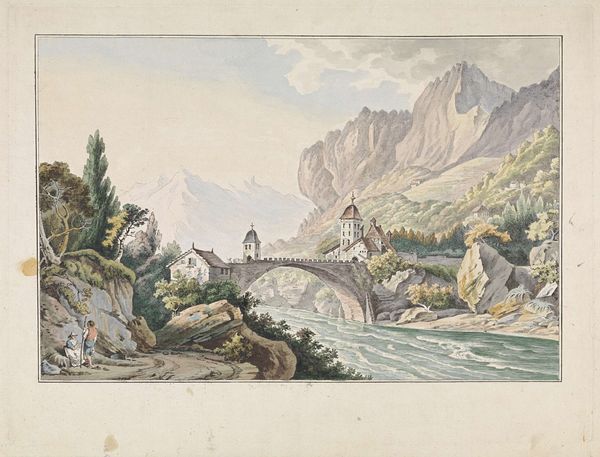
drawing, watercolor, architecture
#
drawing
#
netherlandish
#
baroque
#
dutch-golden-age
#
landscape
#
figuration
#
oil painting
#
watercolor
#
14_17th-century
#
watercolor
#
architecture
Copyright: Public Domain
Editor: This is Abraham Rademaker's "Ancient Grave Ruins in a River Landscape," from around 1695 to 1700. It's a drawing made with watercolor, and it creates this really melancholic, almost theatrical scene. What do you see in this piece, beyond the initial picturesque view? Curator: It’s tempting to just see ruins and romanticize the past, isn’t it? But let’s consider the context: Rademaker was part of a Dutch Golden Age grappling with its own identity, its colonial legacy, and its place within Europe. These ruins aren't just aesthetic objects. How might they speak to anxieties around power and decline, especially as the Dutch Republic was reaching its peak? Editor: So, not just a pretty picture then... It is interesting how the figures are small, almost dwarfed, by the scale of the ruins. Curator: Precisely. That dynamic of scale contributes to the questions of power, of history. The ruins serve as a visual reminder of the temporary nature of empires. Think about who had the privilege of commissioning and consuming such images during Rademaker's time. And how does that intersect with contemporary discussions about monuments and contested histories? Editor: I see what you mean. It’s like Rademaker is inviting a dialogue between past grandeur and present-day power structures, using the landscape as a stage. Curator: Exactly! By showing these grand structures decaying, it subtly critiques the very notion of permanent dominance. What do we inherit when we inherit such perspectives? How does seeing these ruins, then and now, invite a conversation around the transient nature of authority itself? Editor: Wow, I definitely hadn't considered the socio-political implications before. I was just thinking about it as a landscape. Now, I understand there are other narratives in the play too. Curator: That’s the exciting part about engaging with art history – realizing the conversation never really ends, it evolves!
Comments
No comments
Be the first to comment and join the conversation on the ultimate creative platform.
